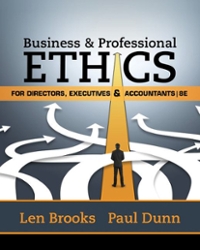Question
eConnect, an online retailer, fulfills its online orders by shipping its products directly to customers in all 50 states. eConnect does not have a brick-and-mortar
eConnect, an online retailer, fulfills its online orders by shipping its products directly to customers in all 50 states. eConnect does not have a brick-and-mortar store presence in any state, but does operate distribution centers in various states across the country, including State X. Consistent with its practice in all 50 states, eConnect does not collect or remit sales tax to State X.
In court rulings in 2005, State X had taken the position that operating a distribution center within a state constitutes nexus and thus would subject that company to collect and remit sales tax on all sales within that state.
As of December 31, 2011, eConnect has operated its distribution center in State X for five years and has never collected or remitted sales tax to State X. Although the company considers the risk of detection to not be probable, eConnect has estimated the total amount of sales tax payable to the state for the past five years to be $50 million plus $6 million in interest and $4 million in penalties.
On March 15, 2012, Mr. Needmoney, the governor of State X, established a tax amnesty program. The program provides that any unregistered taxpayer who voluntarily registers to collect sales tax on a prospective basis will be forgiven (1) 50 percent of all unpaid sales tax and (2) all interest and penalties on unpaid taxes. eConnect management decides to take advantage of this program.
On June 15, 2012, eConnect completes the necessary paperwork and other actions to participate in the program and pays State X $25 million to settle its obligation through December 31, 2011.
Total score for this case: 10 points.
Applicable Professional Pronouncements:
ASC 405-20
ASC 410-20
ASC 450
FASB Concepts Statement 6 (CON6)
Note: when you refer to the pronouncements as supports of your opinion, please give a clear reference to the detailed coding of your quoting paragraph such as ASC 405-20-12-2 states.
Objective of this case:
To apply the key concepts of derecognizing a liability and to distinguish the difference between a contractual or legal liability and a contingency.
Instructions/requirements/grading policies:
As of December 31, 2011, what amount, if any, of sales taxes due should be recognized in eConnects financial statements? (2.5 points)
Please provide a direct answer to the question (i.e., there is $xxx of sales taxes should be recognized as of Dec 31, 2011, or there isnt any taxes due need to be recognized as of Dec 31, 2011). 1 point.
REQUIREMENTS:
Please explain the reasons behind your conclusion and provide supports to your conclusion by using references from the FASB pronouncements listed above. You need to provide at least 3 references. Please note that references from the FASB includes basically two parts: 1) direct quotation of the original wordings from FASB pronouncement, and 2) your argument/explanation why and how the quotation supports your opinion, in another word, how it is relevant to this case.
Step by Step Solution
There are 3 Steps involved in it
Step: 1

Get Instant Access to Expert-Tailored Solutions
See step-by-step solutions with expert insights and AI powered tools for academic success
Step: 2

Step: 3

Ace Your Homework with AI
Get the answers you need in no time with our AI-driven, step-by-step assistance
Get Started


